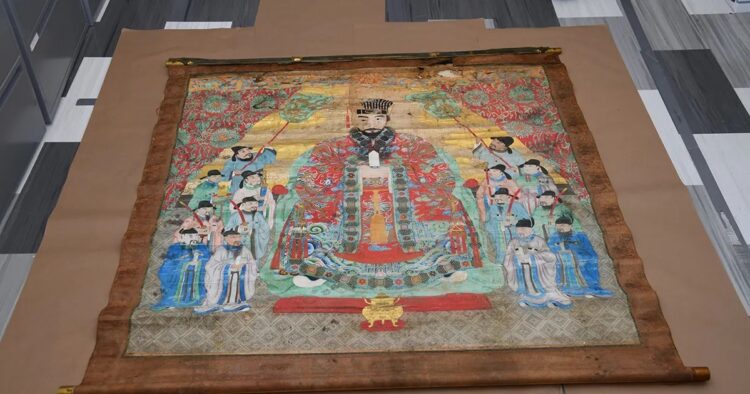In a significant gesture of cultural restoration, the United States has returned twenty-two historic artifacts to Japan, shedding light on a dark chapter of history dating back to World War II. The Federal Bureau of Investigation (FBI) announced the return, highlighting the artifacts’ origins in the aftermath of the Battle of Okinawa.
The artifacts, which include six painted scrolls from the 18th and 19th centuries, alongside a hand-drawn map of Okinawa from the nineteenth century and various pots and ceramics, were reported missing for nearly 80 years. Their return marks a crucial step in addressing the legacy of looting that occurred during the war, especially concerning Okinawa’s rich historical heritage.
The journey of these artifacts back to their rightful home began when a family in Massachusetts stumbled upon them among their late father’s personal belongings. Although the father was a WWII veteran who hadn’t served in the Pacific theater, the discovery prompted the family to reach out to the FBI’s Boston office, initiating a thorough investigation.
Geoffrey Kelly, Art crime coordinator of the FBI’s Boston field office, described the items uncovered as having significant historical and cultural value. Among them were scrolls, pottery pieces, and an ancient map, all bearing the weight of Okinawa’s past. Remarkably, the Massachusetts family’s investigation revealed that at least some of the scrolls had been listed in the FBI’s National Stolen Art File two decades prior.
The typewritten letter found amidst the relics provided crucial insight, indicating that the artifacts were stolen in the waning days of World War II. This revelation underscores the broader context of the Battle of Okinawa, a pivotal conflict in the Pacific War where many vital documents and treasures from the Ryukyu Kingdom were plundered.
Following the FBI’s efforts, the recovered artifacts were transferred to the Smithsonian Institution’s National Museum of Asian Art in Washington, DC. Here, they were put on display, offering glimpses into Okinawa’s history through vibrant portraits of its royalty rendered in rich hues of reds, golds, and blues.
Kelly emphasized the significance of these artifacts, not only as individual pieces but as a collective representation of Okinawan heritage. Despite this notable return, several Okinawan antiquities, including portraits of monarchs, remain missing, prompting ongoing efforts to reclaim and preserve this vital aspect of Japan’s cultural legacy.

















Comments